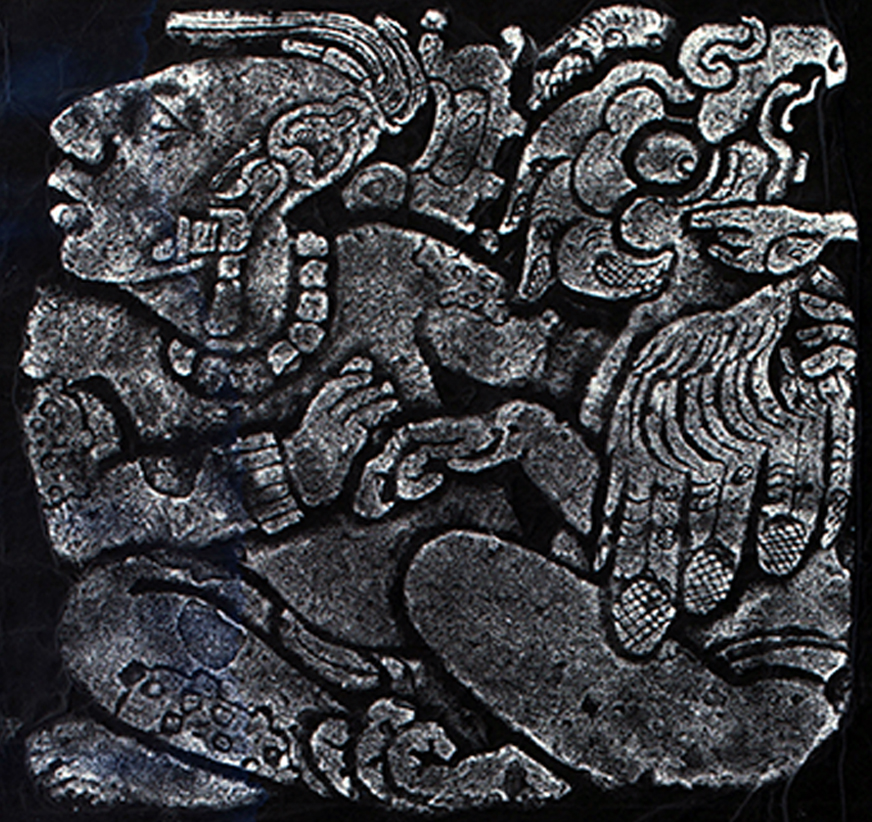New Tools for Reconnecting with Ancient Mayan Texts: The LAL's Newest Digital Collection
The LAL’s latest digital collection in the Tulane University Digital Library (TUDL) is the Merle Greene Robertson Collection of Maya Rubbings, and it is part of a unique international effort to engage with Mayan hieroglyphs in unprecedented ways to anyone with a computer and internet connection. Robertson devoted her 40-year career to recording ancient Maya art and hieroglyphic texts carved on architecture, monuments, and artifacts using an ink-on-rice-paper technique. With the publication of 109 rubbings out of almost 2,000, the LAL embarks on a long-term digitization project for the entire collection to make it more widely known and accessible.
The creation of the Maya Rubbings Digital Collection in TUDL is part of a broader multi-year collaboration with an international group of scholars and institutions led by Gabrielle Vail (University of North Carolina-Chapel Hill) with the common goal of building an open-access, digital repository of Maya hieroglyphic texts called the Classic Maya Text Repository (CMTR). The Robertson digital collection is one of three sources of hieroglyphic texts for the repository. The ultimate goal is to make the images in the CMTR available in the Mayan-READ platform, developed by Andrew Glass and Stephen White, which will provide users the ability to examine, query, manage, edit, annotate, and render Maya hieroglyphic texts in ways not previously imaginable. The creation of an illustrated dictionary or “glyphary” and glyph drawings to develop a font of Classic Maya hieroglyphs are additional goals of the group. The emphasis of the project is to provide global access to this unique linguistic patrimony, the key to one of the great civilizations of the world. Not only scholars but users from all walks of life--from Maya speakers in the Yucatan and neighboring areas to school children and anyone else--will be able to move through Maya texts and see how individual signs or glyph blocks are read, how they combine into phrases, and how the whole can be interpreted.
LAL’s participation in these groundbreaking digital humanities projects has produced the added benefit of multiple institutional collaborations, including the Florida Institute for Hieroglyphic Research, the University of California at Berkeley’s Script Encoding Initiative, the Unicode Consortium, and other partner institutions. A complete description of this exciting project is available here: http://hieroglyphicresearch.org/cmtr.htm
